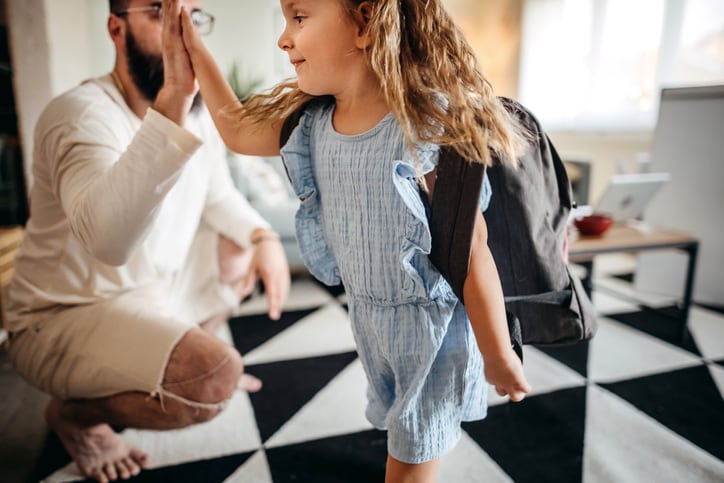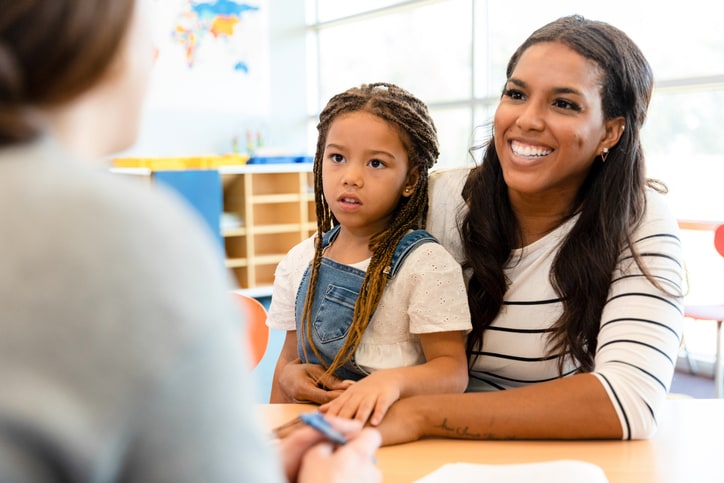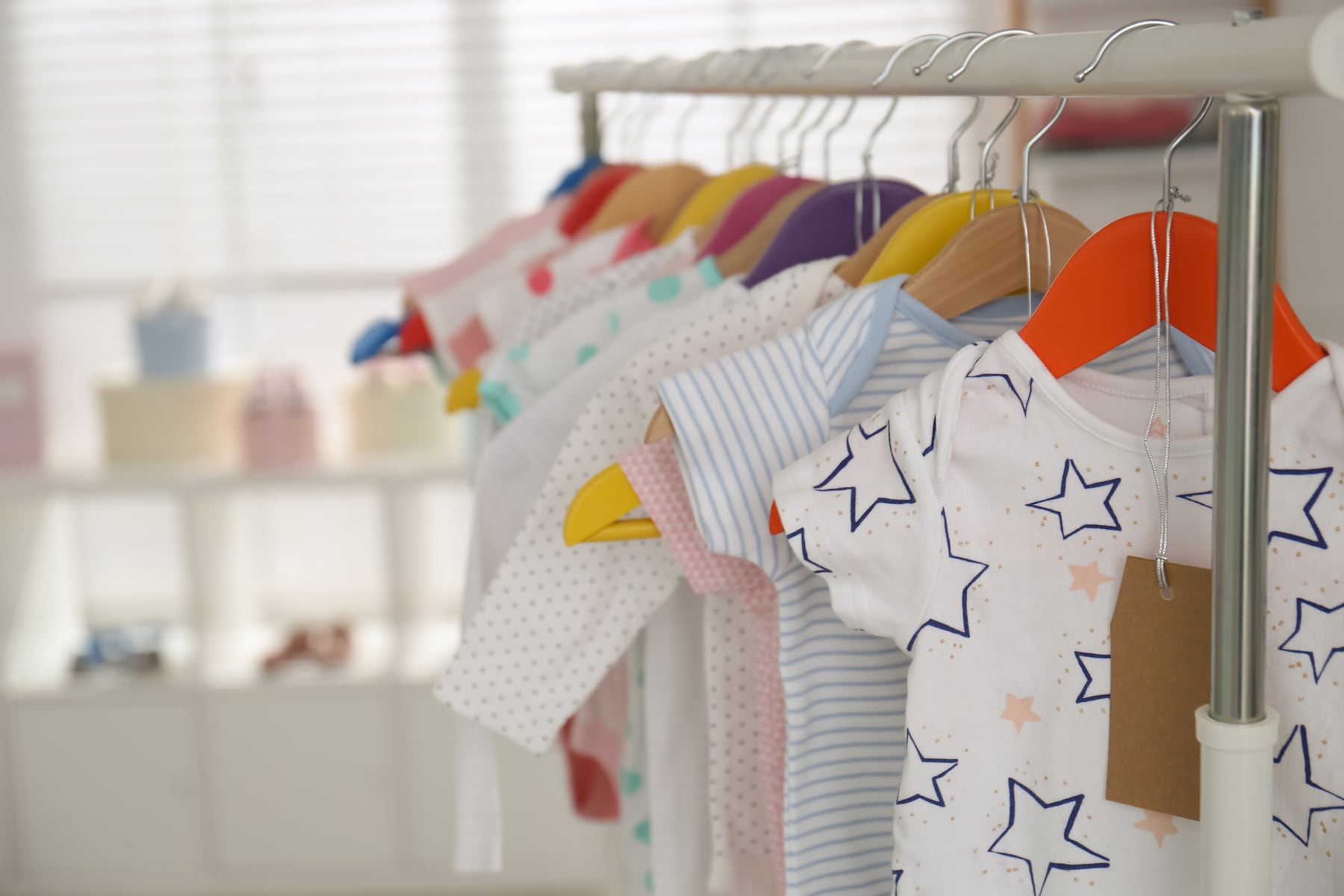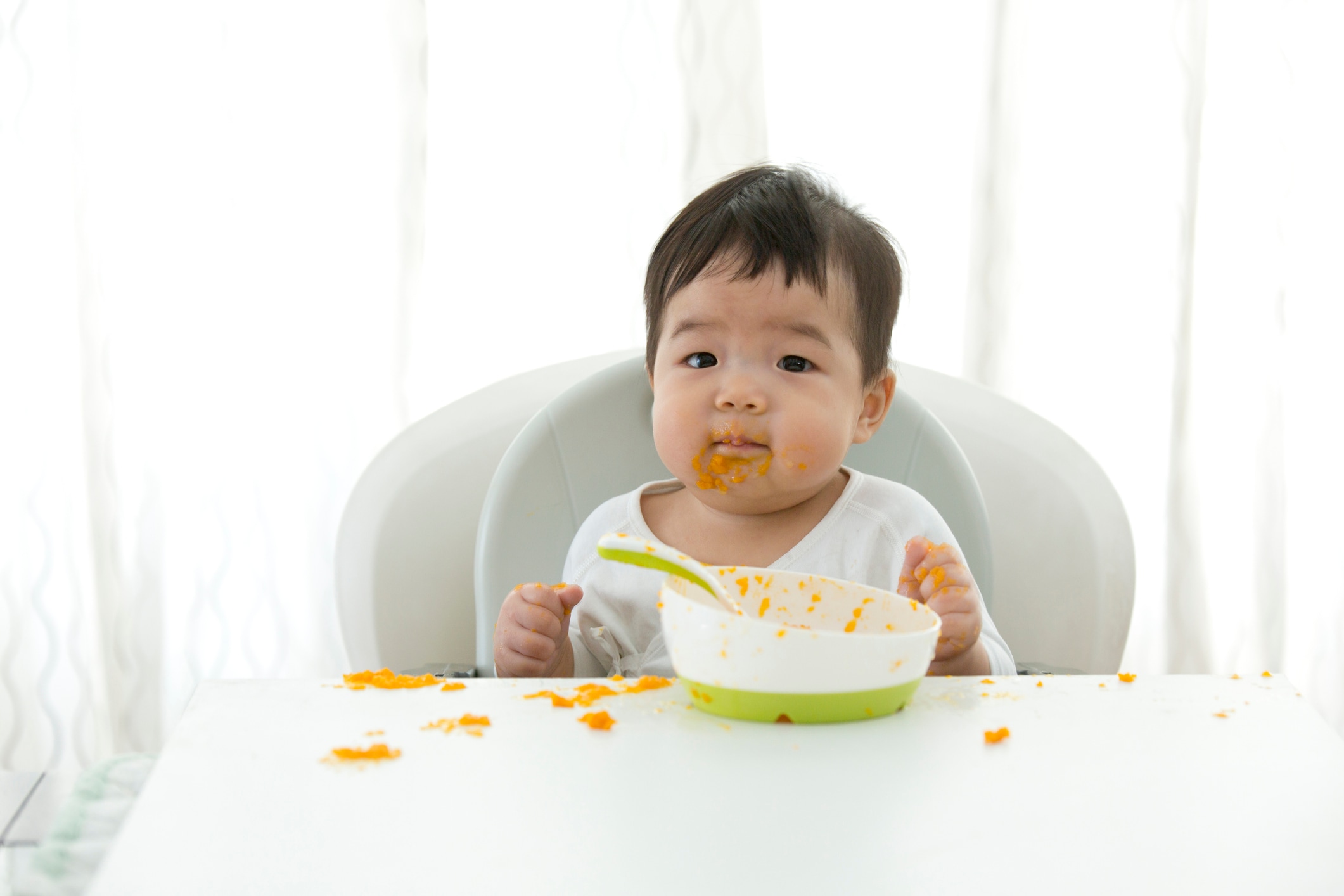Entering kindergarten is a huge milestone for children — one that parents and caregivers should approach with the same excitement and joyful anticipation that they want their kids to experience. So while there are ways to integrate basic preparation into kids’ everyday lives, grown-ups should be careful not to add unnecessary “kindergarten prep” stress to whatever a child may already be feeling about starting something new.
“We like to tell parents to read with their children. Have them practice recognizing their name. When you are shopping, talk to them about the colors, shapes and letter sounds,” explains Ashley Shur, a Middlesex County, New Jersey kindergarten teacher of 13 years, who is quick to add: “A student does not need to be proficient in anything when entering the classroom … and a parent should not feel pressured.”
“A student does not need to be proficient in anything when entering the classroom … and a parent should not feel pressured.”
— ASHLEY SHUR, KINDERGARTEN TEACHER
Of course, encouraging potty and personal care skills is probably ongoing — but, in general, any so-called “kindergarten prep” activities should be play-based, immersive and a part of what a child is already doing at home, says Rachel Rubin, co-founder and educator at LᐧMᐧNᐧOᐧPlay! and a former pre-K and kindergarten teacher in New York
Here are 15 ways parents and caregivers can help lay the groundwork for this momentous new beginning.
1. Practice everyday tasks
Being able to demonstrate independence over one’s personal needs (yep, being able to wipe their own bottoms and wash hands after!) is probably one of the most important skills children should have before entering kindergarten — especially since they’ll be sharing the attention of the teacher with their peers.
Some kindergarten prep suggestions from Shur and Kristen Foster, a mom of two elementary school-age children in Parker, Colorado, include:
- Practice putting on and zippering their own jackets.
- Hang jackets up on hooks or put them in their designated spot.
- Work on opening and closing backpacks, lunchboxes and snack items.
- Put their sneakers on themselves (even if they still need help with laces).
- Clear dishes after meals are done. (They might even help set the table before mealtime.)
Good for: Encouraging independence and confidence, teaching life skills
Read more: Age-appropriate chores for 3- to 5-year-olds
2. Make cleanup fun and fast
It’s one thing for kids to know the cleanup song and another for them to execute it. Christina Soriano, a Brooklyn, New York teacher, who has worked in the NYC public school system for 15 years, suggests turning cleanup time into a game by using some version of a timer.
“I like to tell students that I’m putting on a song, and when the song is over, they should be unpacked and ready to go and on the meeting rug,” she explains. This strategy can be used when asking kids to put away toys or supplies or to pack or unpack their personal belongings. In other words, make the task and the transition from one activity to another fun.
Good for: Following directions, practicing listening skills, navigating transitions, instilling responsibility
3. Let kids in on school supply prep
Involving children in the school preparation process — by having them help pick out supplies or pack a bag with a familiar item — can go a long way in getting kids ready for the new experience, says Professor Erin O’Connor, program leader of early childhood education at New York University in New York and co-host of the Parenting Understood podcast.
That may include having kids pick out their own backpacks, as Foster says her kids did before the first day: “We created enthusiasm and ownership about their backpack — a personal belonging that would go to school with them.”
“We created enthusiasm and ownership about their backpack — a personal belonging that would go to school with them.”
— KRISTEN FOSTER, PARENT
Good for: Getting kids excited for school, creating a connection between home and school, building confidence
4. Create and follow a visual schedule
Adapting to a new routine and following a set schedule is a huge part of the move to kindergarten. Practice this at home, Rubin suggests, by helping kids create a visual chart of everyday activities (like waking up, brushing teeth, feeding the dog) in sequential order — similar to what they will follow in the classroom: “Have the day laid out so they can anticipate what’s coming next,” she says. “This not only helps with self-regulation, but it creates a connection between pictures and words and words and their meaning.
Keeping a calendar at home, adds Rubin, also helps children anticipate school days and visualize the concepts of space and time. That said, with any visual schedule, Shur explains it’s good to also prepare children for changes in their routine that call for (gasp!) flexibility — a pro move in preventing a meltdown.
Good for: Learning how to follow a schedule, working on order and transitions, practicing self-regulation
5. Establish a goodbye routine
To make school separation a bit easier, Rubin says to know what drop-off or pickup is going to look like and to familiarize children with the routine. Walk through how they are going to get to school, what they are going to see along the way, even how they might say goodbye.
Part of that goodbye plan might involve finding a simple way for children to maintain connection to home when they are at school. Foster says she tucked a small family photo inside both her kids’ backpacks. Other options include leaving a note to keep in their cubby or lunchbox — or even planting a kiss that they can carry in their hand, which is the secret to easing separation in Audrey Penn’s highly-recommended book “The Kissing Hand.”
Of course, parents should have a goodbye plan as well. “How you act will directly impact how your student feels when they are starting school,” notes Shur. “Students pick up on any stress.” In other words, if parents are excited for their children to start school, then kids will be too. And remember, Rubin says, teachers are prepared to support children experiencing this very normal anxiety: “Helping kids through separation is part of the work.”
“How you act will directly impact how your student feels when they are starting school. Students pick up on any stress.”
— ASHLEY SHUR, KINDERGARTEN TEACHER
Good for: Handling separation, building confidence, knowing what to expect
6. Read to kids early … and often
“As a teacher and a parent, I always say the same thing: The best way to get your child ready for school is just to expose them to as many books as humanly possible,” explains Susie Lyons, a longtime educator in both elementary and middle schools and a Manalapan, New Jersey mom of a recent kindergarten graduate. “We started reading with our son from the time he was born, and I do believe that his exposure to books and good literature has given him the readiness to learn and now excel in his reading skills.”
Shur agrees that just reading simple books together — and even having children tell a story with the pictures — will help with literacy skills. And O’Connor adds that talking about the story and asking kids how they think a character might feel helps children create connections and build social emotional skills.
Good for: Early literacy skills, creating bonding time, establishing a connection between books and everyday life
7. Find learning fun in everyday field trips
Yes, even having kids tag along on errands to the grocery store or post office can be a learning experience. In fact, the National Education Association suggests taking kids to neighborhood places or on outings to the zoo or the park to help “develop their understanding of the world.”
While these visits can be more social than academic, Shur suggests making everyday experiences more meaningful by talking to children about what they see. She adds that a lot of curricula teach students about community helpers, so familiarizing children with their neighborhood also gets them ready for what they might learn in the classroom.
Good for: Social awareness, connecting to the real world, learning to be part of a community
8. Break out some old-fashioned board games
Introducing children to games, like Chutes and Ladders and Candyland, is not only fun for the whole family, but it also allows children to unknowingly work on skills that they’ll need in school.
Whether collaborative or competitive, Rubin says board games help kids:
- Practice waiting, taking turns and following simple instructions.
- Use dice or flip cards.
- Learn math concepts, such as counting.
Good for: Taking turns, self-regulation, following rules, fine motor skill development, basic math ideas
9. Play “I Spy”
“I spy with my little eye” is a popular and playful game that helps children associate letters and sounds with words and objects. Choose a letter and “spy” an object that begins with that letter, says Shur. Then ask children to guess what that object might be. If they are still learning the alphabet, Rubin suggests choosing objects that start with letters that make distinct sounds, such as “b” — or picking words that start with the first letter of a child’s name.
Good for: Pre-literacy skills that involve matching sounds to letters and letters to words, taking turns, following instructions
10. Use food to help with patterns and sorting
That’s right — encourage kids to play with their food! Shur recommends giving children different kinds of cereal or candy and having them sort out the various kinds in various ways — by type, by color, by size, by the letter the foods start with … Kids can then work up to creating patterns with the sorted foods. This can also double as snacktime when they’re done!
Good for: Early math skills like counting and sorting, creating patterns, fine motor skill development
11. Have fun with collages
Dust off those old magazines and allow children to turn them into art with a secretly educational purpose. Shur suggests that kids cut out different letters (or objects that begin with different letters) to create a collage — or even an ABC letter book. Children can personalize the theme of the project by cutting out numbers, objects of different colors, shapes, animals — the possibilities are endless.
(Pro tip: Shur advises grown-ups to draw a circle or a box around the letter, number or object to make cutting along a line — with age-appropriate scissors — easier for young kids.)
Good for: Practice with scissors, identifying letters, numbers, shapes, colors and themed objects
12. Encourage open-ended play
Supply children with materials that have limitless options, Rubin recommends, so that they learn to sit for periods of time (which they will be expected to do in the classroom!) and really engage in play. That means giving them blocks or any type of building material, play dough, clay, foam, slime, bowls, utensils — anything that might foster creativity, encourage them to focus and eventually translate into imaginative play.
Good for: Creativity, imagination, concentration, encouraging both independent and group play (depending on the setting)
13. Let kids make a mess
Add shaving cream, sand, glitter, glue — anything that kids can literally get their hands on and into — to those open-ended supplies. “In general, sensory materials have that emotional soothing effect,” says Rubin of activities that encourage self-regulation and sensory processing.
Messy materials also lend themselves to both creative play and more structured projects that, Shur says, can promote letter recognition and writing. These include tracing letters in a homemade sand box, making sand letters (using colored paper, glue and sand) and using shaving cream or foaming soap as a surface on which to “write.”
Good for: Sensory processing, self-regulation, development of fine motor skills, learning that it is OK to get dirty
14. Set up playtime with peers
Many kids going into kindergarten already know what it is like to socialize with same-age peers, but refreshing those skills before school starts — goes a long way in helping kids feel more confident.
Jessica Zuckerman, a Port Washington, New York mom of two and current middle school assistant principal, says: “A few families from our nursery school are going to be at the same elementary school as us. We have set up a few playdates for the kids to get together so that they have friendly and very familiar faces they know on the first day of school.”
“A few families from our nursery school are going to be at the same elementary school as us. We have set up a few playdates for the kids to get together so that they have friendly and very familiar faces they know on the first day of school.”
— JESSICA ZUCKERMAN, ASSISTANT PRINCIPAL AND PARENT
Foster agrees, saying she set up opportunities for her kids to play with other children prior to kindergarten and “to experience what it feels like to mix with new children — with mom present to help teach in the moment along the way.” And Soriano adds that even just going to the playground will help children strengthen skills, like taking turns and sharing, that are necessary for socialization in kindergarten.
Good for: Building confidence, making friends, socialization
15. Answer questions and practice open communication
It’s normal for kids to have first-day butterflies — not just about separation, but in terms of what kindergarten is going to actually look like. “Let your children know what to expect,” says O’Connor, “giving them as much developmentally appropriate information helps so it’s not a total shock to the system.”
“Let your children know what to expect, giving them as much developmentally appropriate information helps so it’s not a total shock to the system.”
PROFESSOR ERIN O’CONNOR, PROGRAM LEADER, EARLY CHILDHOOD EDUCATION
To help kids open up and then navigate these emotions, Rubin suggests:
- Reading stories about doing something new for the first time — losing a tooth, going to camp or “anything that is about a change or a fear of the unknown.”
- Gathering answers to specific questions children might have about a new school or classroom, like where they’ll eat lunch or where the bathroom is located.
- Having parents or caregivers share their own relatable firsts and how they felt about them, essentially giving kids permission to feel the emotions they are experiencing.
“In my opinion, parents can get really wrapped up in what we think we are supposed to do to create and control outcomes for our children,” explains Foster. “But we as their parents are the only ones who can love them at home in a way no one else can. We can uniquely help to build confidence, esteem for children to bring to school, be the ones they process their emotions with — the rest are small matters.”
Good for: Preparing for new experiences, helping to understand emotions, boosting confidence, self-esteem and secure attachment





